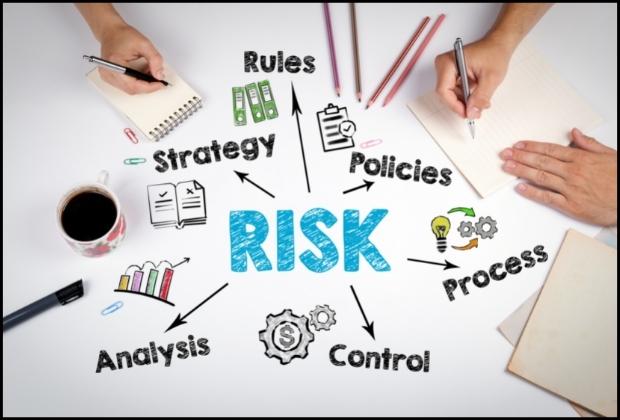In the fast-paced world of finance and investment, uncertainty is a constant. While opportunity often emerges from unpredictability, so too does risk. This is why creating a solid risk management plan is not just wise but essential.
It's your roadmap for anticipating challenges, reducing potential losses and maintaining stability even when markets turn turbulent.
What Is a Risk Management Plan?

A risk management plan is a structured approach to identifying, analysing and responding to potential risks that could impact your financial goals. It helps individuals and organisations take pre-emptive action to protect their capital and strategic objectives.
Whether you're a private investor or managing assets on a larger scale, having a plan allows you to assess which risks are worth taking and which should be avoided or mitigated.
Why Every Investor Needs One
You don't have to be a hedge fund manager or a large institution to need a risk strategy. In fact, retail traders, small business owners and even individual savers benefit immensely from having a risk management plan. Here's why:
Prevents Emotional Decision-Making: In moments of high market volatility, emotions can override logic. A defined plan keeps decisions rational.
Promotes Consistency: By setting parameters in advance, you're less likely to deviate from your long-term goals.
Minimises Losses: Knowing your risk tolerance helps you avoid overexposure and identify exit points early.
Builds Confidence: Knowing you have a clear plan boosts your confidence in executing trades or investment strategies.
Core Components of a Risk Management Plan
Creating a comprehensive risk management plan doesn't need to be overly complicated, but it must be thorough. Below are the fundamental elements to include:
1. Risk Identification
Start by listing all potential risks that could affect your portfolio or financial operation. This could include market volatility, interest rate fluctuations, geopolitical tensions, cybersecurity threats or liquidity issues.
2. Risk Assessment
Evaluate the likelihood of each risk occurring and its potential impact. This helps prioritise which risks need immediate attention and which can be monitored over time.
3. Risk Response Strategies
Once risks are identified and assessed, outline how you'll handle them. Strategies can include:
Avoidance: Steering clear of activities that carry too much risk.
Mitigation: Taking steps to reduce the likelihood or impact.
Transfer: Outsourcing the risk, e.g. through insurance.
Acceptance: Acknowledging the risk and proceeding cautiously.
4. Monitoring and Review
A risk management plan is a living document. Market conditions change, and so should your plan. Schedule regular reviews to ensure it remains aligned with your goals and reflects the current economic climate.
Common Mistakes to Avoid
Even the most experienced investors can fall into traps when implementing a risk management plan. Here are a few pitfalls to avoid:
Underestimating Risk: Don't assume a stable past guarantees a stable future.
Overcomplicating the Plan: Complexity can make plans harder to follow. Clarity is key.
Neglecting to Reassess: A stagnant plan quickly becomes obsolete.
Ignoring Correlation: Diversification is only useful when assets aren't moving in tandem.
Failing to Define Clear Exit Strategies: Knowing when to cut losses is just as important as knowing when to enter a trade.
How Risk Tolerance Shapes Your Plan

Understanding your own risk tolerance is vital. This isn't just about how much loss you can afford but how much you can emotionally endure. Some investors thrive in high-risk, high-reward scenarios, while others prefer slow and steady growth.
Your risk management plan should be customised accordingly, reflecting your financial position, experience level and long-term objectives.
Using Tools and Technology
Today's investors have access to a range of digital tools that support smarter risk planning. From advanced trading platforms that allow for automated stop-losses, to data analytics that monitor portfolio performance in real-time, technology can reinforce the effectiveness of your risk management plan.
Platforms like EBC Financial Group also provide access to resources and expert insights that help you build stronger, more resilient strategies.
Risk Management Plan in Practice: A Simple Example
Let's say you're a retail trader working with a modest portfolio. You identify that earnings reports and central bank announcements often trigger sharp market moves. In your risk management plan, you decide:
No new positions are to be opened one hour before major news events.
Stop-losses are placed at 2% of capital per trade.
No more than 10% of total capital will be exposed to any single asset class.
Simple rules like these, when consistently applied, can shield your portfolio from unexpected downturns and give you a framework to build upon as your skills grow.
Why Proactivity Beats Reactivity
The true value of a risk management plan lies in its ability to prepare you ahead of time. Trying to make decisions during a market crash or amidst panic is rarely effective. A proactive plan empowers you to make calm, informed decisions before risk manifests into reality.
Final Thoughts
A well-thought-out risk management plan is not a luxury reserved for institutional investors. It's a foundational tool for anyone who wants to navigate financial markets with clarity and control. By identifying potential risks early, planning your responses, and reviewing your strategy consistently, you lay the groundwork for sustainable success.
Whether you’re building wealth, preserving assets, or simply trying to avoid financial missteps, having a clear plan will always put you in a stronger position.
Disclaimer: This material is for general information purposes only and is not intended as (and should not be considered to be) financial, investment or other advice on which reliance should be placed. No opinion given in the material constitutes a recommendation by EBC or the author that any particular investment, security, transaction or investment strategy is suitable for any specific person.








